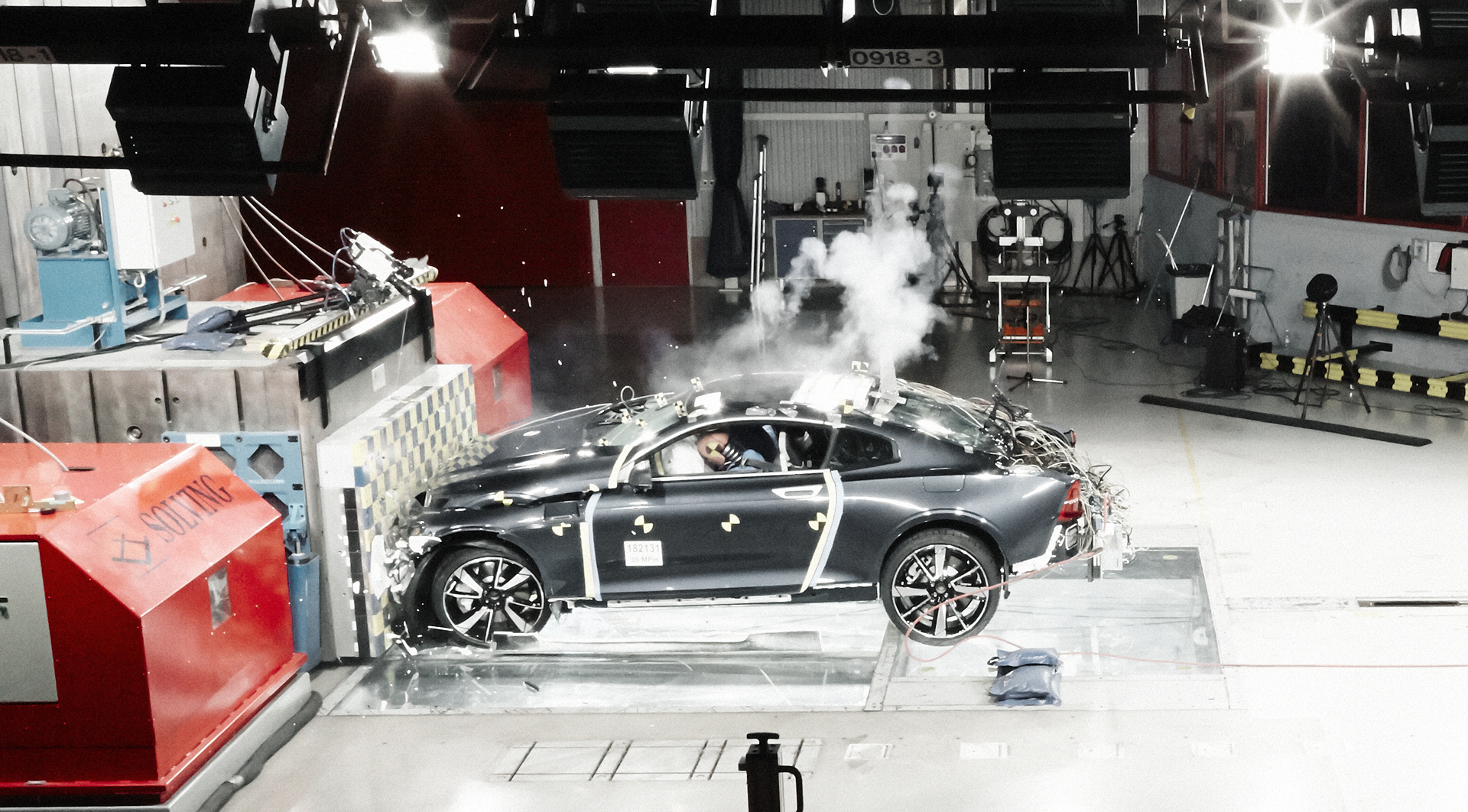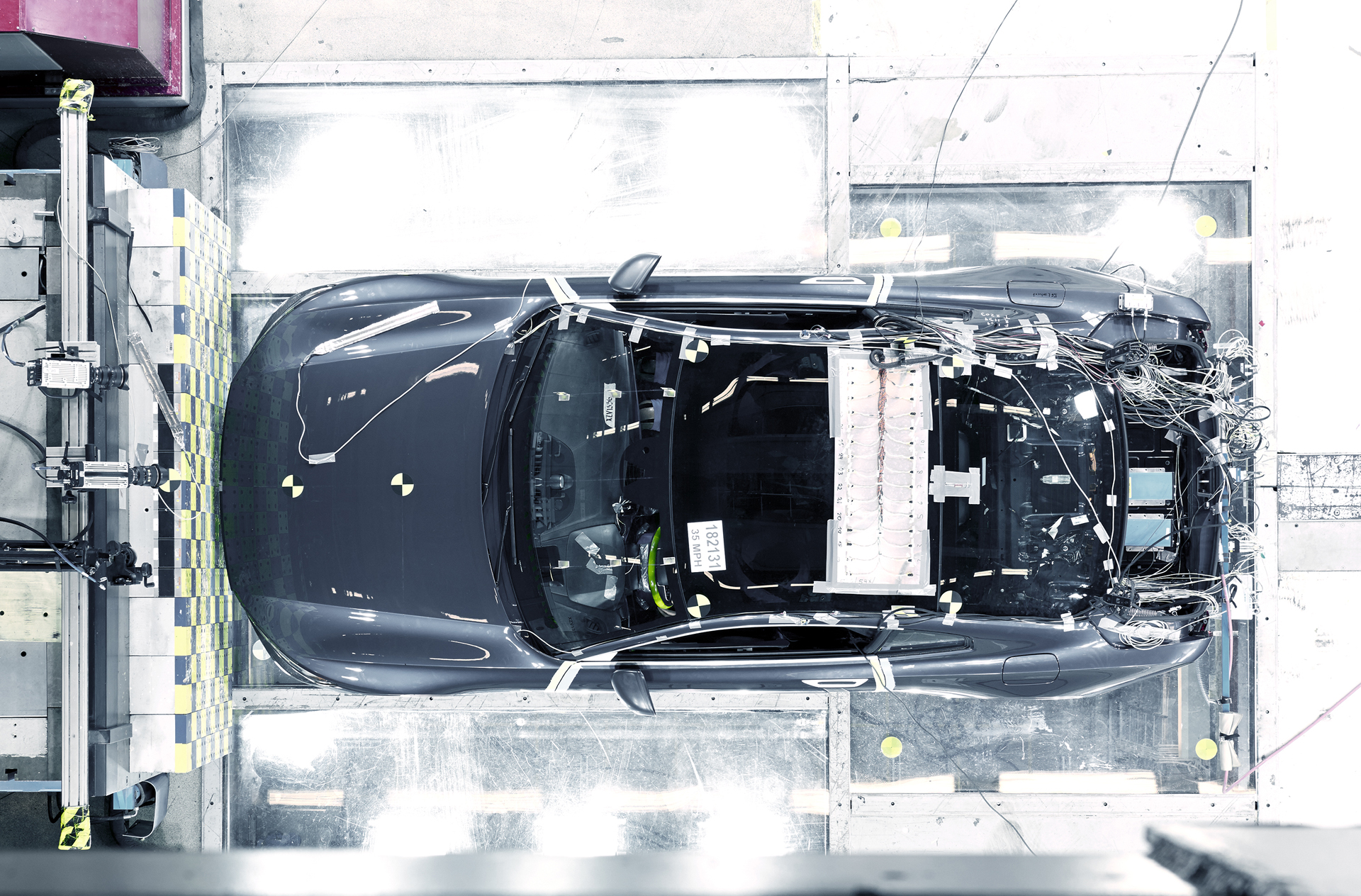Volvo built its reputation on the strength of its vehicles’ safety. And that, in seems, will extend to its new electrified performance offshoot.
Polestar has undertaken the first crash tests of its forthcoming first model. And the Polestar 1 appears to have passed with flying colors, thanks to the strength of its carbon-fiber bodywork.
While the vehicle’s frame is made of steel, the Polestar 1 will be cloaked in body panels made of the super-light yet highly rigid woven material, which is designed to crack and shatter to dissipate the force of a crash, instead of dent and buckle the way metal panels do.
Safety engineers ran a pre-production prototype into a stationary barrier, namely a wall, at 56 km/h (35 mph) to simulate a frontal collision at the Volvo Cars Safety Centre in Gothenburg, Sweden. The manufacturer says the crash structure absorbed most of the energy, leaving the metal frame intact with no signs of damage.
“We were really excited about this crash test. The first crash test of Polestar 1 has been about exploring the unknown,” said Polestar CEO Thomas Ingenlath. “This was a crucial proof point in the development of Polestar 1; we had to know that the ideas and calculations that have gone into building this car were right – and they were.”
“The outcome of this first crash test validates the decision to build the body of Polestar 1 in carbon fibre,” added the company’s carbon-fiber specialist Zef van der Putten. “It also confirms that carbon fibre supports the highest safety standards. This is an example of how Polestar spearheads the development of new technology in the Volvo Car Group.”





